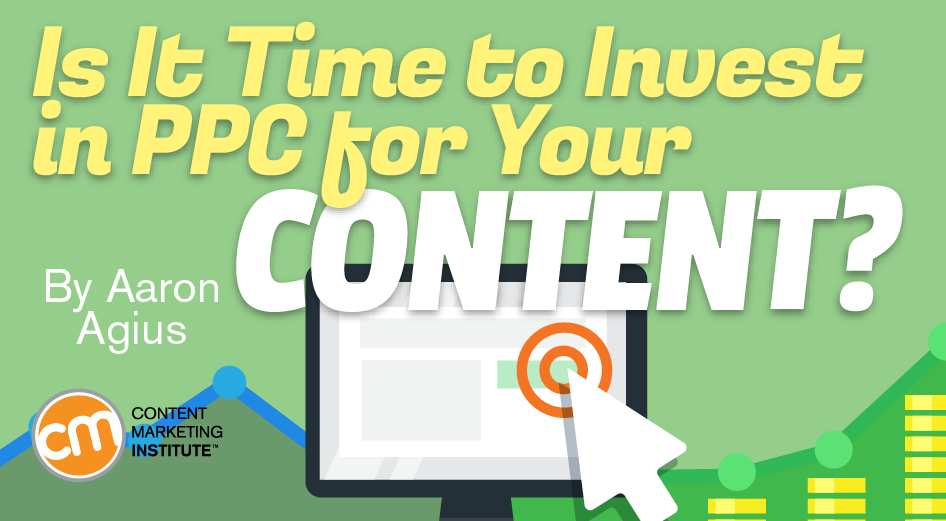Get attention and trust Marketers often run Facebook ads to highly targeted demographics. Test your content elements Split testing is integral to running a successful PPC ad campaign, yet the tactic also can work for content marketing. It’s best to run tests for at least a week and include multiple blog posts to ensure that your results demonstrate real user preferences. Promote special content As any marketer knows, your “best” content doesn’t always generate the most engagement. By running a Facebook page post engagement ad to promote your special content, you will receive “likes,” posts and shares at a low cost – particularly if you’re smart with your targeting, as described above. TIP: Alternatively, page post engagement ads can be used to promote content that already performed well. But in terms of content, you could use retargeting through a Facebook ad to promote a contextually relevant blog post to someone who has added one of your products to their shopping cart, but hasn’t completed the purchase. Alternatively, you can retarget people who engaged with a particular blog post with a PPC ad promoting a contextually relevant product. Takeaway: Use retargeting PPC ads to promote relevant content to someone who abandoned the purchase process. Feel free to include additional tools in the comments (from your company or ones that you have used).

At first glance, pay-per-click and content marketing can seem like contrasting ideologies. PPC offers an immediate ROI. Alternatively, content marketing is an excellent tool for improving your brand’s visibility, but it often takes time to gain momentum.
But the two can work together. PPC can act as a secret weapon for your content marketing, supercharging your content campaigns and giving you an edge over your competition.
Get attention and trust
Marketers often run Facebook ads to highly targeted demographics. They send those who click the ad to an optimized landing page, featuring sales copy, product photographs, FAQs, reviews, security badges, and other trust elements. Their objective is to get the lead to click the “add to cart” button conveniently placed for maximum visibility and then to complete the purchase.
However, marketers often get tunnel vision in terms of optimizing their PPC landing pages for purchasing conversions. Even if their PPC campaigns are successful in driving people to the site, those viewers can feel it was a waste of a click because the marketers haven’t focused their effort on making visitors feel at home but only on encouraging them to convert.
A 2016 survey revealed that 67% of Americans say they pay more money to support brands they trust. Before somebody buys from a company they’re unfamiliar with, they often explore other pages on the site, looking for indicators of legitimacy. Having a frequently updated blog, with lots of high value content, and indicators of social proof (many comments and social shares) demonstrates credibility and builds the trust needed to ultimately drive conversions.
Takeaway: PPC can be used to bring attention to your site, while content marketing can be used to build trust once these new visitors have arrived.
Laser target to attract content fans
Content marketing sometimes is used as a shotgun approach to brand exposure – you regularly upload content to the internet, hoping your core buyer reads it and ultimately becomes a paying customer.
While content marketing provides long-term SEO benefits, which ultimately help buyers who are searching for your product to find you, in the short term, content marketing too often entails broad targeting.
For instance, guest blogging is a frequent tactic in content marketing. But if an infographic design agency publishes a guest post on a digital marketing blog, only a fraction of the readers are likely to be interested in hiring an agency to create visual content for their brand.
But with a documented buyer persona, you can laser-target your content through a PPC campaign because you have analyzed demographic data – age, gender, geography, income level, interests – from previous customers. You can exclude unlikely buyers and include likely buyers in your content promotion.
Say, for example, you’re selling mixed martial arts apparel. You want to target fans of lightweight UFC champion Conor McGregor. Although this type of targeting is better than nothing, it’s still not going to get you in front of the right people.
Because his name transcends the sport, plenty of people who like Conor McGregor on Facebook may only watch mixed martial arts when he’s competing or they might just enjoy updates of his extravagant lifestyle and may not care about the sport whatsoever. In other words, Facebook fans of Conor McGregor wouldn’t be ideal customers for your apparel.
Say, instead, that you decide to target fans of fighters who have less mainstream recognition but are highly regarded within the mixed martial arts niche, such as No. 5-ranked welterweight Jorge Masvidal. It’s highly unlikely that someone would be a fan of Jorge without having a deep affinity for the sport – so this targeting makes more sense. By advertising your content to these…

COMMENTS